SELLING OFFER
Seek co-innovation with global enterprises and governmental institutions
Plasma livestock stench extractor and Plasma agricultural freshness maintenance machine
304 2021. 8. 5.
Summary
In south Korea, Using plasma to create oxygen-activated species, remove odors and sterilize the inside of the barn. It has strong deodorizing power that removes more than 95% of odor substances such as ammonia and hydrogen sulfide and shows 99.9% sterilization power of various bacteria, viruses, and fungi. Due to this, it is possible to reduce the odor of livestock farms, create a clean livestock environment, and solve odor complaints. It is a technology that can be applied not only to livestock but also to homes and hospitals. In addition, through this technology, ethylene gas, which is a harmful gas that ripens agricultural products, reacts with OH radicals and is reduced to carbon dioxide and water, thereby reducing the harmful gas, thereby reducing the waste rate of agricultural products and maintaining freshness, thereby increasing marketability.
Advantages and Innovations
- The company has its own plasma technology related to commercialization-related odor removal from livestock, and this odor removal technology has obtained NET certification based on technological superiority.
- Compared to domestic similar competitive items, this technology has an edge in terms of work efficiency and cost reduction.
- Overseas, technology development and commercialization related to odor removal using plasma, which is at the same level as the technology of this company, has not been progressed at present. In this case, it is judged that it is possible to quickly secure a base
- It is an eco-friendly method that can minimize the human body risk of ozone in the existing ozone technology method.
- This developed technology uses low-temperature atmospheric pressure plasma technology and has the following advantages.
- This technology is sustainable as clean technology and has a low environmental impact.
- Low-temperature oxygen plasma does not have secondary environmental pollutants generated during the treatment process and does not require a special ozone-depleting device or exhaust ozone device like the existing high-concentration ozone gas sterilizer.
- Sterilization by low-temperature oxygen plasma can prevent drug resistance of microorganisms.
- Excellent sterilization performance, easy handling, and no risk to livestock and the human body.
- It improves sterilization efficiency and does not generate by-products during the sterilization process, making it easy to perform sterilization in an environment-friendly way
Stage of Development
Description
This technology is a reliable technology that has received new technology certification, performance certification, and patent certification, and it is a technology that can deodorize and sterilize and maintain the freshness of agricultural products through plasma.
When the machine is operating, low-temperature plasma is generated between the ceramic rod and the metal electrode, and the generated plasma and water and oxygen in the air chemically react to generate ozone and oxidizing and reducing OH radicals.
Ozone and OH radicals generated in the plasma generating device are discharged out of the device by a blower fan at the back of the product. The emitted ozone and OH radicals react with odorous substances such as ammonia and sulfur compounds in the air to be decomposed and reduced into the water, carbon dioxide, and nitrogen. In the process, more than 95% of odor substances are removed and 99.9% of various bacteria, viruses, and fungi are killed. It also decomposes and purifies contaminants on the walls of the barn.
Ozone and OH radicals are unstable under atmospheric pressure and are deactivated and disappear within a short time, so air quality can be safely improved.
It is an innovative product that can contribute to the prevention and control of livestock diseases such as AI and foot-and-mouth disease by generating ozone through optimal plasma generation even in a high-temperature and high-humidity environment, reducing damage caused by odors, and improving productivity. It is possible to increase income by 5 million won per 100 pigs.
It is a technology that can be applied not only to livestock facilities, but also to odorous and humid places such as compost facilities, manure treatment facilities, food waste treatment facilities, wastewater treatment facilities, school cafeterias, lodging facilities, entertainment facilities, homes, hospitals, and restaurants.
Although it is usually difficult to generate plasma in a humid place, it is a technology that can efficiently generate plasma even in a humid place.
In addition, through this technology, ethylene gas, a harmful gas that ripens agricultural products, reacts with OH radicals to reduce carbon dioxide and water and reduces harmful gases to reduce spoilage of agricultural products and maintain freshness, thereby increasing marketability.
In the existing plasma generator, ammonium nitrate is generated due to the combination of a large amount of ammonia and ozone during the plasma reaction.
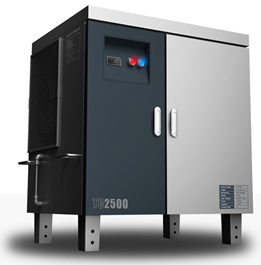
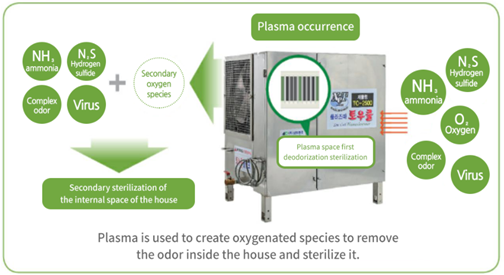
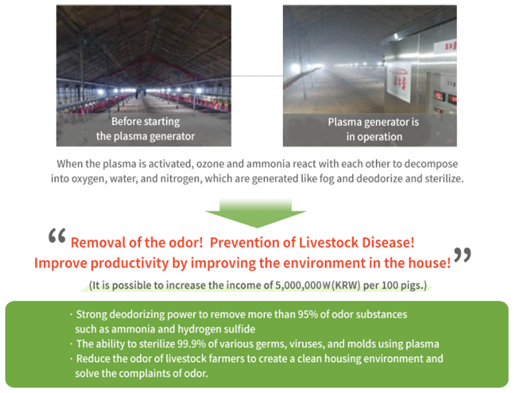
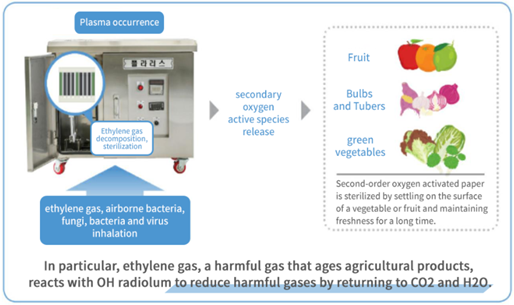
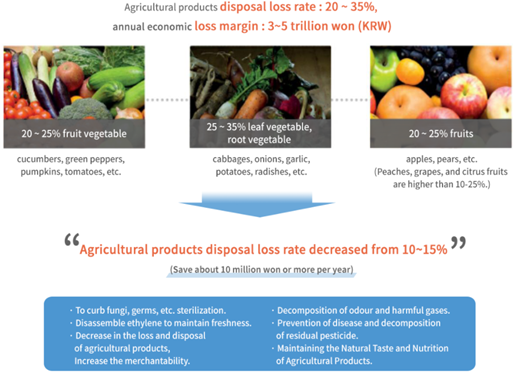
Technology Keywords
Market Application Keywords
Sector Group
Type and Size of Client
Type and Role of Partner Sought
Livestock Industry Associations, Hospitals, Companies, public institutions, private institutions, etc. which have any trouble or want to deal with any stench or bacteria and virus.
Type of Partnership Considered
Company
Internal Reference
Category
If interested, please press this button.
We will answer you soon.